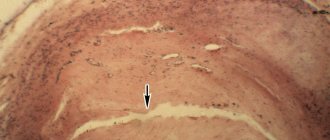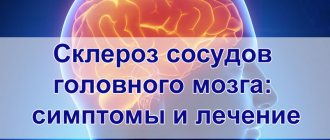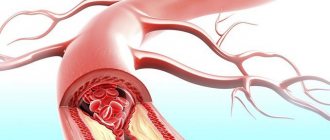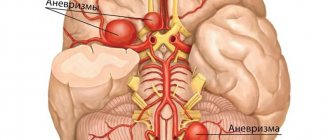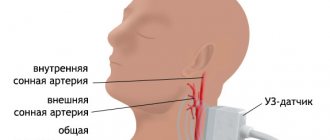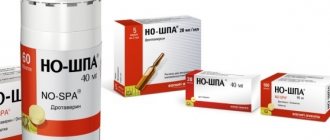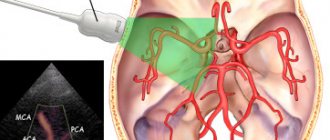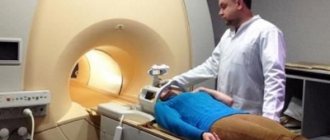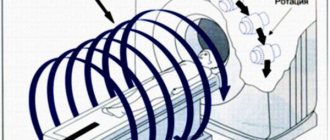Diet is one of the main components of successful therapy for the diagnosis of cerebral atherosclerosis.
The “right” food products and the appropriate way of consuming them have a therapeutic effect, create the necessary background for the most effective effect of drugs on the body, and help avoid exacerbations.
Nutritional Features
For cerebral atherosclerosis, diet No. 10 is prescribed . It involves reducing the calorie intake, reducing fat intake, and increasing the proportion of fiber-rich foods in the diet, in particular vegetables.
Here are the principles of nutrition for patients with this diagnosis:
- You need “good” cholesterol, as well as a sufficient amount of vegetables and fruits rich in vitamins B6, B12, C, E, which are easily digestible.
- Food is prepared without fat or only vegetable oil is used; cooled fat is removed from ready-made first courses.
- Products are boiled and steamed.
- Fried, salty, canned and smoked foods are avoided.
- Salt is added to prepared dishes; foods are not salted during cooking or baking.
- To prepare confectionery products, the whole egg is not used, but only the white.
- Meals should be five times a day, which avoids overeating.
- The share of protein foods is increasing, mainly due to cottage cheese, fish, lean meat ( the permissible dose is up to 150 g per day of each of the listed products). This helps keep you feeling full longer, and the body spends more energy on digestion.
When prescribing a diet, the doctor pays attention to body weight.
The table shows the main standards (per day):
| Energy value of food for excess weight (with normal and underweight) | 2200–2400 kcal (2800–3000 kcal) |
| Weight of daily portion | 2.0–2.5 kg |
| Free liquid | 700–900 ml |
| Fats in the daily diet for overweight (normal and underweight) | about 60 g (about 70 g) |
| Proteins (prevent fatty liver degeneration and cholesterol deposition) | About 100 g, of which 60–70 g are animals |
| Carbohydrates for overweight (normal and underweight) | About 250g (about 400g) |
| Bread (black/white), crispbread | 250 g (150 g/100 g) |
| Fruits | 200 g |
| Vegetables | 300 g |
An ideal “diet” plate looks like this: half of its contents is a vegetable or fruit salad, two-thirds of the remaining empty space is carbohydrates (side dish - porridge, potatoes, etc.), the rest is proteins.
When is the operation performed?
In case of complications, excessive blockage of atherosclerotic plaques in the vessels of the neck and carotid arteries, or damage to blood vessels, surgical intervention cannot be avoided, although complete recovery cannot be confirmed. It is required to follow a diet and maintain a healthy lifestyle in the future. The eradication of plaques in the vessels in the neck eliminates only the consequences of the disease. Applicable techniques include:
- Stenting (low-traumatic method) - by installing a stent and membrane filters in an artery to expand the lumen of the blood vessel and ensure normal blood circulation. By removing lipid compounds, the blood will be filtered to avoid blood clots.
- Bypass surgery - to improve blood flow by puncturing the neck without compromising the integrity of the arteries. As a result, revascularization will be carried out or the patency of blood vessels from accumulated excess cholesterol will be restored.
- Carotid endarterectomy - by cutting the artery in places where the vessels are narrowed to remove plaques clogged with cholesterol, then suturing the vessels.
Rarely do doctors try to dilate blood vessels by increasing blood pressure, since this method is ineffective and can only lead to the formation of new deposits later.
Authorized Products
While on a diet, patients should consume the following foods:
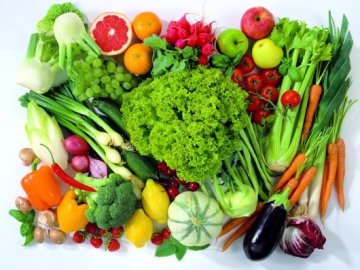
- Greens, vegetables - potatoes, all types of cabbage, green peas, carrots, pumpkin, zucchini, eggplant.
- Fruits, berries - ripe, raw, dried, in compotes, jellies, mousses.
- Meat : low-fat varieties, boiled, baked after cooking, low-fat boiled sausage, ham.
- Fish, seafood : tuna, salmon, cod, sardine, trout, mussels.
- Low-fat dairy and fermented milk products - cottage cheese, lightly salted cheese, sour cream as an addition to main dishes.
- Flour products : wheat bread (I–II grade), rye bread, doctor's bread, unsalted pastries and dry biscuits.
- First courses : beetroot soup, cabbage soup, borscht, soups - vegetarian with the addition of cereals and potatoes, dairy, fruit.
- Cereals – oatmeal, buckwheat, millet. Limit the consumption of rice, semolina, and pasta.
- Salads, vinaigrettes , seasoned with vegetable oil, with seafood.
- Drinks - weak tea, natural coffee or its substitute with added milk, juices - vegetable, fruit, rosehip, bran decoctions.
Gastronomic taboos
Many products decorate the menu and are favorite delicacies. However, with atherosclerosis of cerebral vessels, they are abandoned. The following were banned:
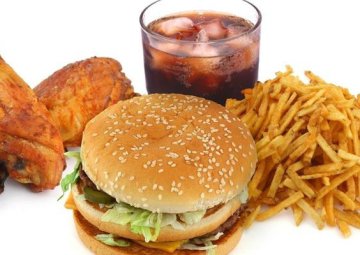
- animal fats, including cow butter;
- fatty meats, including sausages and pates;
- fatty broths, dishes prepared using them;
- soups and broths from mushrooms, legumes, fish;
- sauces from prohibited products, mayonnaise.
- internal organs of animals (offal) - liver, kidneys, brains, as well as products made from them, pates;
- fatty milk products, cheeses from 30%, ice cream;
- fried potatoes, chips;
- rich baked goods, high-calorie confectionery products.
Cause of atherosclerosis of neck vessels
In the human body there are many vessels, large and small, as well as capillaries. Their main function is the blood supply to organs and tissues. The blood that flows through the arteries is saturated with oxygen and nutrients; they are necessary for vital metabolic processes in the human body. Its composition directly depends on the food that a person consumes. That is why the diet should be varied and balanced, especially if the diagnosis of atherosclerosis of the cervical vessels has already been made.
If the vessels of the neck are healthy, they react normally to spasms, their walls, when required, become toned or relax.
If cholesterol begins to accumulate in the vessels, the walls lose flexibility, become denser and brittle, the vascular lumen decreases and blood circulation is disrupted. In most cases, there are no symptoms of real illness.
If the arteries of the neck are affected, the brain is affected first, then the spine, organs of the digestive and excretory systems. In rare cases, atherosclerosis is caused by a single factor. As a rule, the development of this disease is provoked by a combination of several - excess weight, unhealthy lifestyle, hereditary predisposition. At the initial stage, atherosclerosis of the neck does not make itself felt in any way; it can only be detected through a thorough examination. But this rarely happens; the patient consults a doctor when the following signs begin to bother him:
- headaches and migraines;
- damage to memory, fixation of attention and performance;
- depressed mood;
- pain in the neck;
- interference with movement coordination.
Symptoms can be combined in a variety of ways, sometimes only one appears, and in some cases several at once. You cannot ignore such symptoms; you should definitely consult a doctor and start treatment with medications, which will be perfectly complemented by diet and folk remedies.
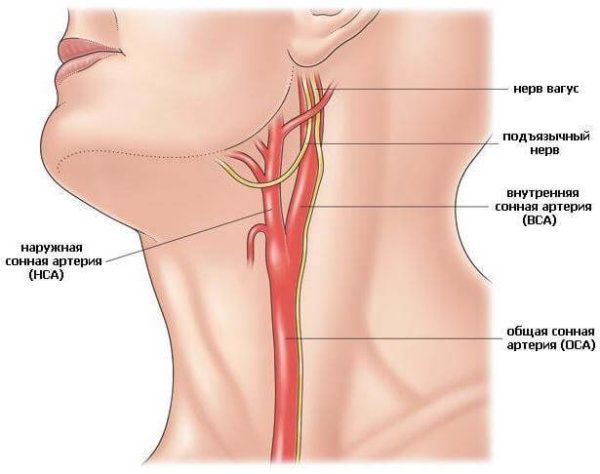
It's possible, but be careful
Use with caution:
- vegetable oil;
- low-fat cheeses;
- soft-boiled eggs (no more than 3 pieces per week), in the form of protein omelettes.
- soy sauce;
- confectionery, marmalade, fruit syrup, marshmallow, sugar, honey;
- pasta.
How does cavernous sinus thrombosis occur and what can it lead to? Forewarned is forearmed. Do you want to find out whether the treatment of cerebral atherosclerosis with folk remedies is effective? That way!
Do you know whether a carotid aneurysm is dangerous and how to detect it in time? If not, read this.
How to treat?
Cholesterol cleanses liver cells, rejuvenates the skin, and has a positive effect on human thinking and intelligence. With an incorrect lifestyle, blood vessels gradually become clogged, and cholesterol accumulates in the form of plaques. The development of atherosclerosis in the neck is inevitable. For atherosclerotic plaques of neck vessels, treatment is complex:
- medicines;
- normalization of the diet (the composition contains exclusively fresh, environmentally friendly products, flour, fatty and sweet foods are eliminated);
- rejection of bad habits;
- avoidance of stress, passive, sedentary spending of time.
Taking medications should not provoke an aggressive response from the body. Only a doctor prescribes therapy taking into account the risks to the patient’s health. Conservative treatment is effective at the initial stage of development of atherosclerosis (with the formation of fatty plaque on the inner walls of blood vessels). Medicines containing folic acid are prescribed only when there is an imminent threat of stroke or heart attack. The following drugs and substances will help reduce the synthesis of cholesterol in liver cells and increase energy metabolism:
- Fenofibrate, Lipanor, Traykor, Choledol, Crestor, Mertenil, Rosucard - the composition contains nicotinic acid to thin blood clots;
- mineral supplements - to normalize balance in the body;
- vitamins B, C, A;
- Dietary supplements with flaxseed oil and omega-3 fatty acids;
- biliary tract sequestrants - to suppress the formation of plaques;
- sorbents - to minimize the penetration of cholesterol into the bloodstream;
- fibrates - to reduce triglyceride levels in the blood.
It happens that plaques in the vessels of the cervical spine and carotid artery resolve on their own - it is enough to normalize the diet. Treatment with medications is not carried out. If cholesterol plaques have reached impressive sizes, and the connective tissue in the places of deposition has become fibrous, then surgery is inevitable.
Sample menu
Allowed products must be combined correctly. Here are three menu options for the day.
1st option
- Breakfast : oatmeal, vegetable salad seasoned with vegetable oil, coffee.
- Lunch : beef stroganoff, one apple, cottage cheese.
- Lunch : boiled meat, vegetable stew of potatoes and zucchini, compote.
- Afternoon snack : boiled fish, mashed potatoes, charlotte with apples, tea.
- Dinner : kefir.
2nd option
- Breakfast : steamed egg white omelet, wheat porridge, coffee with milk.
- Lunch : vegetable salad of cabbage and cucumbers.
- Lunch : pearl barley and vegetable soup, steamed meat cutlets, berries.
- Afternoon snack : cottage cheese, some fruit.
- Dinner : boiled fish, pumpkin porridge.
3rd option
- Breakfast : natural yogurt, raw apple, tea.
- Lunch : cottage cheese casserole.
- Lunch : rice and vegetable soup, salad with seaweed, steamed meatballs, compote.
- Afternoon snack : kefir.
- Dinner : fish baked in the oven, mashed boiled potatoes, carrot salad with garlic and vegetable oil.
How to remove cholesterol plaques from the carotid artery
The decision on how best to remove cholesterol plaques on the vessels of the neck and carotid artery is made based on the results of an examination by a cardiologist, ophthalmologist, neurologist, nephrologist and vascular surgeon. Stress tests, ECG, coronography, ultrasound of the aorta and heart vessels, angiography are prescribed. Duplex and triplex scanning allows assessing blood flow in the carotid artery. An MRI may also be required to visualize the vessels and plaques in them.
To remove cholesterol plaques in the vessels of the cervical spine, lifestyle changes and drug therapy will be prescribed.
Also effective: flaxseed oil and flaxseeds, omega-3 and, to a lesser extent, omega-6 acids (found in cold-water fish and fish oil). Vitamin C, garlic (essential oils) have not shown any significant effect against atherosclerotic deposits, but they are effective against inflammatory processes, which are often the root cause of damage to blood vessels and, consequently, the formation of plaques.
Drugs such as statins, fibrates, nicotinic acid and bile acid severstants have stabilizing properties - these medications are not able to destroy atherosclerotic deposits, but can slow down or suppress the formation of new deposits.
Special Recommendations
The inclusion of some vegetables and fruits in the therapeutic diet helps to cleanse blood vessels. Be sure to include watermelon, eggplant, grapefruit, seaweed, as well as cherries, strawberries, and quince . They prevent calcium deposits, remove cholesterol, saturate the body with vitamins and beneficial micro- and macroelements - for example, iodine, like seaweed.
Garlic is especially worth highlighting. A good result is achieved by consuming one clove of fresh garlic per day, the course of treatment is at least six months. Flax and fenugreek seeds, which are added to food, reduce cholesterol levels and cleanse blood vessels.
An alternative option for improving the health of the body could be a vegan diet. But it has a significant drawback that cannot be ignored: it is quite difficult for residents of the countries of the former USSR to create a balanced menu based only on plant products. In addition, scientists have proven that it is not the cholesterol that is present in meat that is dangerous, but the lack of fiber - vegetables and fruits .
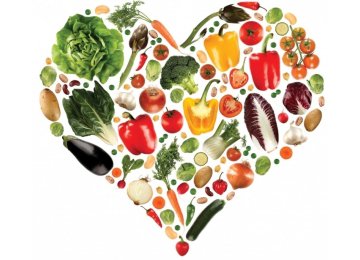
The first signs of blockage of blood vessels in the brain are sometimes observed even in children. However, symptoms become pronounced when the lumen of the artery narrows by more than two-thirds.
One of the most dangerous complications of the disease is a stroke or cerebral aneurysm. To avoid illness or delay its onset, it is necessary to ensure proper nutrition from the very first days of life . Then it will be possible to avoid the deposition of cholesterol on the walls of blood vessels.
How is diagnosis carried out?
It is important to identify the cause of atherosclerosis and previous chronic diseases. Blockage of blood vessels with cholesterol can be caused by:
- improper lifestyle of the patient;
- bad habits;
- disrupted diet;
- abuse of fatty carcinogenic foods;
- genetic factor.
After the initial examination and interview, the doctor will redirect you to undergo:
- Dopplerography of cervical vessels or ultrasound - to identify the degree of narrowing of the arteries and the movement of blood through the vessels;
- angiography as a digital diagnostic method by introducing a contrast agent - to obtain images about the state of the vascular system as a whole and each bloodstream separately;
- CT scan - for analysis using images of the condition of blood arteries.
The patient's medical history and other chronic illnesses, which may well cause the formation of cholesterol plaques on the neck, are carefully studied. Moreover, cholesterol is vital for the body. It is due to it that hormones (testosterone, estrogen) and vitamin D are synthesized. With a deficiency, nerve fibers, brain tissue, and the functions of the cardiovascular and reproductive systems suffer. It is normal when the vessels are flexible, clean and smooth, the blood flow is not impaired, and the blood flow rate is normal.
